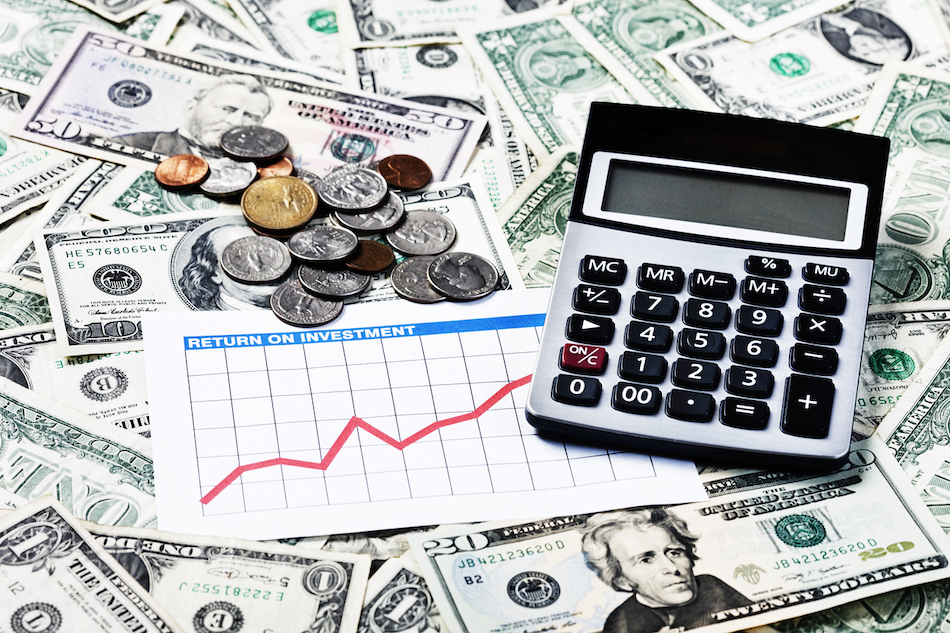Investing in a rental property may be a good way for an investor to generate recurring rental income while building wealth over the long term.
However, not all homes generate the same amount of return just because they can be rented. In fact, one of the biggest questions a real estate investor may have is whether or not a rental property is generating a good return for the property and the local market.
In this article, we’ll discuss what rate of return means, cover three ways to calculate a rental property rate of return, and explain what makes a good rate of return on rental property.
Key takeaways
- Rate of return on rental property compares the gain on investment over a certain period of time to the money invested, and is expressed as a percentage.
- Three methods for calculating return on a rental property are ROI, cash-on-cash return, and cap rate.
- A good rate of return depends on factors such as an investor’s willingness to accept risk, condition of the property, and the neighborhood and real estate market the property is located in.
What does rate of return mean?
Rate of return (RoR) measures the percentage of gain or loss from an investment over a specific period of time compared to the initial cost of the investment. When a real estate investment makes money, the rate of return is positive. If an investment loses money, the rate of return is negative.
Calculating rate of return
The basic formula for calculating rate of return looks like this:
- Rate of Return = Ending Investment Value – Beginning Investment Value / Beginning Investment Value x 100
For example, assume a home in Austin, Texas was purchased last year as a primary residence. The buyer paid $359,000 and today the same home is worth $520,898, according to Zillow (Sep 30, 2021).
To calculate the rate of return, subtract the purchase price from the current value of the home to determine the gain or loss, divide by the purchase price, then multiply by 100 to obtain the percentage of gain or loss:
- $520,898 ending investment value - $359,000 beginning investment value = $161,898 gain
- $161,898 gain / $359,000 beginning investment value = 0.45 x 100 = 45%
While that’s a pretty impressive double-digit rate of return, it’s worth noting at this point that home prices can go down as well as up.
For example, during the Global Financial Crisis of 2007-2009, the median sales price of houses sold decreased by $49,000, as reported by the Federal Reserve (through Q3 2021). If a home was purchased at the top of the market and sold when the market bottomed out, the rate of return would have been -19%.
By understanding real estate cycles, an investor may have been able to profit from the decline in home prices more than 10 years ago. Over the following 5 years, from Q1 2009 to Q1 2014, median home price rose from $208,400 to $275,200, generating a rate of return of 32%.
How to calculate rental property rate of return
Calculating the rate of return on a rental property is a little more complicated than the previous example. That’s because a rental home may generate annual net cash flow or income, in addition to the property value changing.
Throughout the holding period, an investor may also invest more cash into a property to make capital improvements that increase potential value and rental income, such as remodeling a kitchen or converting a basement into additional rentable square footage.
There are several different metrics a real estate investor may use to calculate the return on a rental property that take into account property value, the amount of money invested, and the cash flow and net operating income generated by a property.
Return on investment (ROI)
Return on investment is calculated using the following formula:
- ROI = Net Return on Investment / Cost of Investment x 100
For example, assume an investor purchases a single-family rental home for $100,000. The annual rental income is $14,400 and operating expenses (including property management, repairs & maintenance, insurance, and property taxes) are $5,500.
To calculate the 1st year ROI, subtract the operating expenses from the rental income collected, then divide by the purchase price of the home:
- $14,400 rental income - $5,500 operating expenses = $8,900 net return on investment
- ROI = $8,900 net return on investment / $100,000 cost of investment = 0.089 x 100 = 8.9%
Cash-on-cash return (CoC)
Instead of paying cash for a property, an investor may use conservative leverage by making a down payment and financing the balance of the property purchase price. Cash-on-cash return is calculated using the following formula:
- Cash-on-Cash Return = Annual Pre-Tax Cash Flow / Total Cash Invested
As a rule of thumb, most lenders require a 25% down payment for an investment property loan. If an investor makes a $25,000 down payment to purchase a $100,000 single-family home, the mortgage (principal & interest) for a 4% fixed-rate 30-year loan would be $360 per month ($4,320 per year) and the cash-on-cash return would be:
- Annual pre-tax cash flow = $14,400 rental income - $5,500 operating expenses - $4,320 mortgage payment = $4,580
- Cash-on-cash return = $4,580 annual pre-tax cash flow / $25,000 down payment total cash invested = 0.183 or 18.3%
Capitalization rate
Capitalization rate (or cap rate for short) is the percentage return calculated by dividing the net operating income (NOI) by the property purchase price using the following formula:
- Cap Rate = NOI / Property Price
NOI is determined by subtracting operating expenses (excluding the mortgage payment and capital repair expenses) from the rental income. The mortgage payment is excluded from NOI because financing terms such as interest rate and down payment may vary from one investor to the next.
By not including the mortgage in NOI and assuming a property is purchased for cash, an investor is better able to make an apples-to-apples comparison of similar rental properties in the same market.
If the rental income is $14,400 and operating expenses (excluding the mortgage and capital repairs) are $5,500, the NOI is $8,900 and the cap rate is 8.9%:
- $8,900 NOI / $100,000 property price = 0.89 or 8.9%

Factors that affect rate of return on rental property
In order to accurately calculate a rental property’s rate of return, the following factors should be considered:
- Property data such as square footage, number of bedrooms and bathrooms, historical repair costs, and property value.
- Rental income information such as current rent, fair market rent, potential for additional income such as roommate or pet rent, and vacancy rate.
- Operating expenses including property management and leasing fees, repairs and maintenance, insurance and property taxes, mortgage principal and interest payments, and HOA fees.
- Mortgage details like down payment, fixed or variable interest rate, and loan term such as a 30-year or 15-year fixed rate loan.
What is a good rate of return on rental property?
The $100,000 single-family rental property used in the preceding examples generated an ROI of 8.9% and a cash-on-cash return of 18.3%. Whether those returns are good depends on an individual investor, the property specifics, and the neighborhood and real estate market the rental property is located in.
For example, assume an investor is analyzing two similar single-family rental homes in the same neighborhood for purchase. If both homes generate the same rate of return, but one will require a brand new heating, ventilation and air conditioning (HVAC) system in the next couple of years, the home that already has a newer HVAC may be the better investment, everything else being equal.
On the other hand, sometimes a rental property will have a lower rate of return but may offer hidden value for a buyer. For instance, an owner who has a property free and clear may be satisfied with the existing cash flow and will not raise the rent. There’s no mortgage to pay for and operating expenses are fairly predictable, so the owner does not want to spend the time running rent comparables.
However, by running the numbers, a buyer may determine that by charging a fair market rent, pre-tax annual cash flow and potential return could be significantly increased.
Final thoughts
A good rate of return on rental property means different things to different investors. A real estate investor who is risk-averse may choose to purchase a newer home in a neighborhood with a high rating, even though the potential returns are lower.
On the other hand, an investor willing to accept a balanced blend of risk and reward may invest in a rental property in an up and coming neighborhood to collect rental income while waiting for the home to appreciate over the long term.
By comparing the rates of return on rental properties in different markets, an investor can better understand the pros, cons, and potential return on investment from single-family rental homes in some of the best cities in the U.S.









